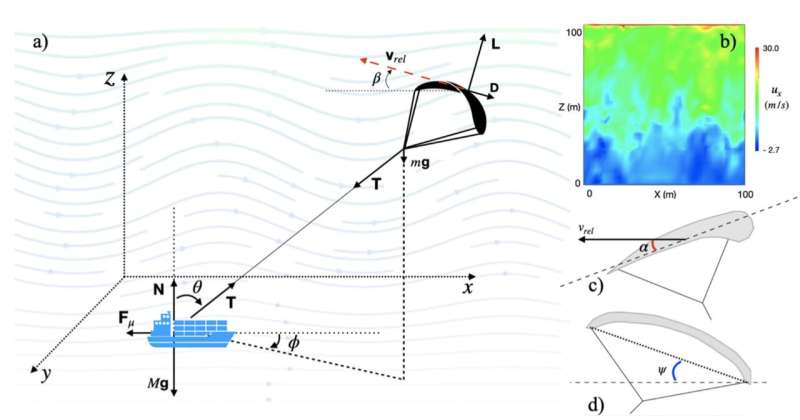This article has been reviewed according to Science X's editorial process and policies. Editors have highlighted the following attributes while ensuring the content's credibility:
fact-checked
peer-reviewed publication
trusted source
proofread
Machine learning could help kites and gliders harvest wind energy

Airborne wind energy (AWE) is a lightweight technology which uses flying devices including kites and gliders to harvest power from the atmosphere. To maximize the energy they extract, these devices need to precisely control their orientations to account for turbulence in Earth's atmosphere.
Through new research published in EPJ E, Antonio Celani and colleagues at the Abdus Salam International Center for Theoretical Physics, Italy, demonstrate how a Reinforcement Learning algorithm could significantly boost the ability of AWE devices to account for turbulence.
With far lower construction costs than traditional wind turbines, AWE could prove immensely valuable in expanding the reach of wind power to poorer, more remote communities. To extract wind energy, flying devices are either tethered to a ground station, where power is converted into electricity, or used to tow a vehicle.
The main challenge faced by this technology is to maintain its performance in widely varying wind and weather conditions. To do this, researchers currently use computer models to predict the future state of the atmosphere, allowing kites and gliders to dynamically adjust their orientations. However, since turbulence requires an immense amount of computing power to approximate precisely, it is often ignored in existing models, leading to suboptimal performances in AWE systems.
In their study, Celani's team addressed the issue using Reinforcement Learning: a machine learning algorithm which uses trial-and-error interactions with the surrounding environment to calculate which orientation of a kite or glider will extract the maximum possible energy from the atmosphere. As a proof of concept, the researchers applied the algorithm to a simulated ship being towed along by a kite.
When issued with a simple set of maneuvering instructions, the kite used Reinforcement Learning to tow the ship over long distances, even with no prior knowledge of the turbulence it would encounter. With the early success of their approach, Celani and colleagues now hope that the use of Reinforcement Learning could soon enable the reach of AWEs to expand even further in the future.
More information: N. Orzan et al, Optimizing airborne wind energy with reinforcement learning, The European Physical Journal E (2023). DOI: 10.1140/epje/s10189-022-00259-2















